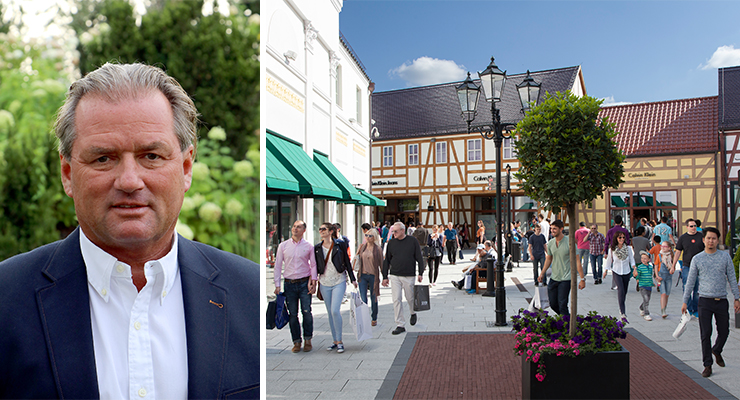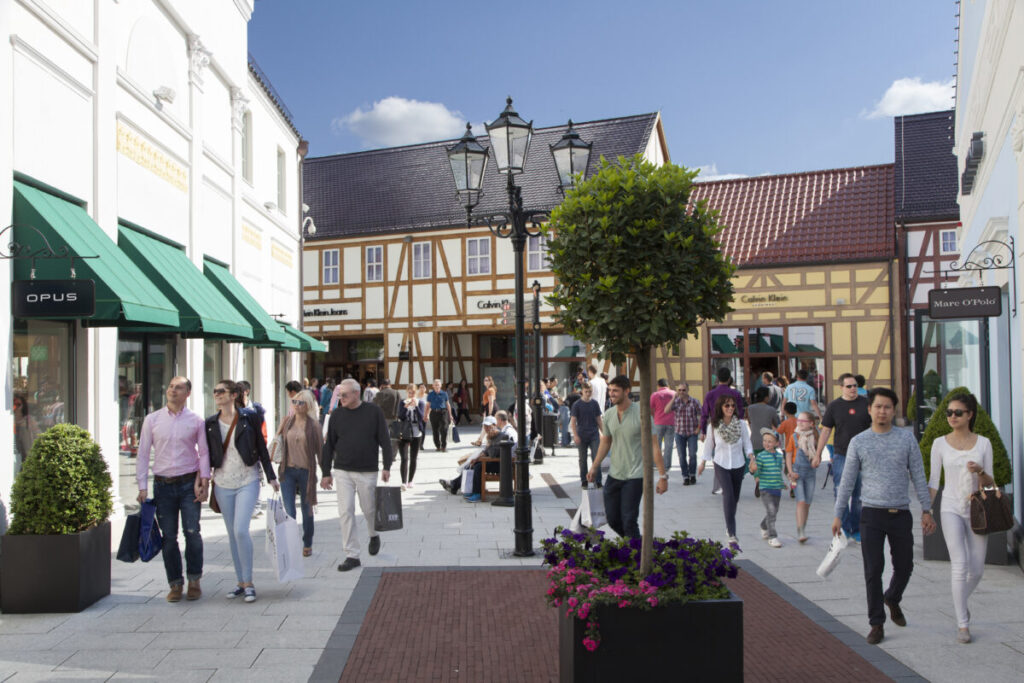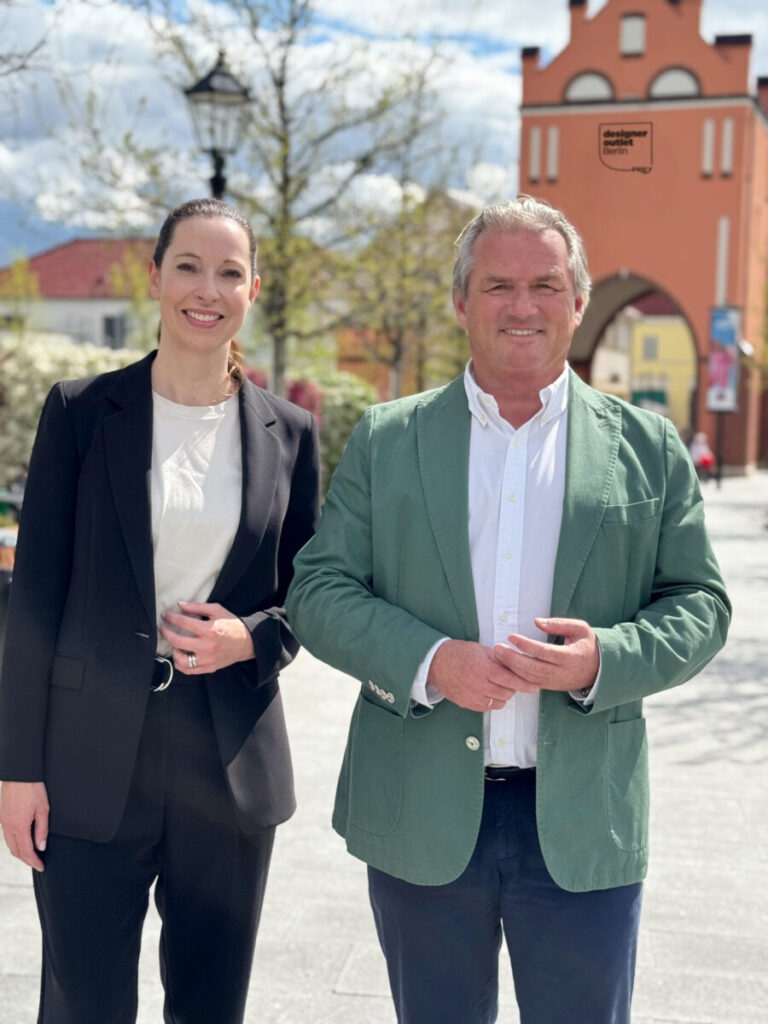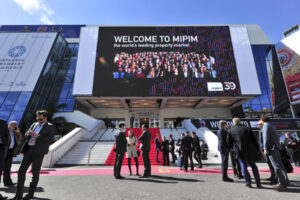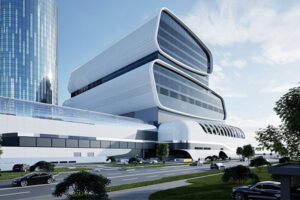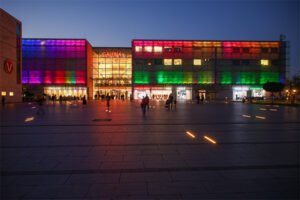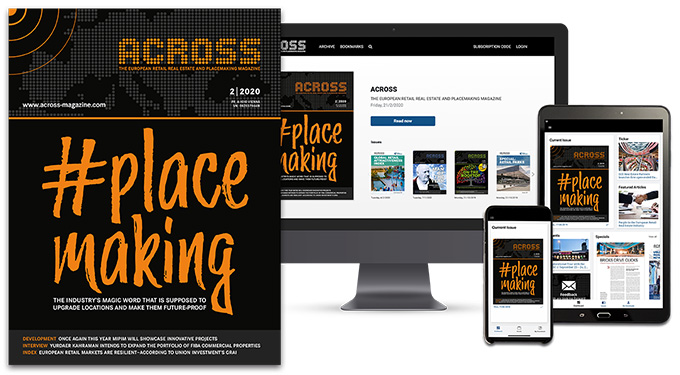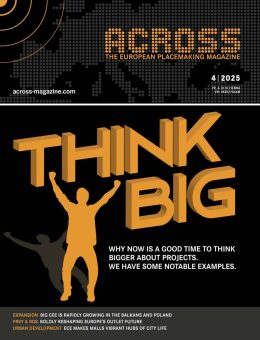ACROSS: FREY and ROS Retail Outlet Shopping have acquired their first asset with Designer Outlet Berlin. What is the core objective of this acquisition?
THOMAS REICHENAUER: The mission of FREY and ROS is to become the European market leader in open retail and high-end shopping destinations in the coming years. Our first joint project, Designer Outlet Malmö, is scheduled to open in 2027, and the acquisition of Designer Outlet Berlin marks another strategic step. This is a well-established, fully leased premium outlet with an excellent catchment area. Not only have we secured a strong asset in the stable German market, but we also see considerable long-term potential through targeted investments and day-to-day operational optimizations.
ACROSS: Where specifically do you see the potential for improvement?
REICHENAUER: One focus is on refining the brand and category mix, especially by introducing more premium and aspirational brands. There’s also clear potential to upgrade the F&B offering, add more entertainment options, and enhance the overall look and feel of the center. Small, smart changes can make a big impact — from aesthetics to atmosphere to tenant performance.
From a customer journey perspective, the central plaza — currently dominated by F&B — could be reimagined to better connect the two main outlet sections and create a more seamless and inviting experience.
ACROSS: F&B is currently a hot topic in the outlet sector. What’s your vision for Berlin?
REICHENAUER: Today, F&B is more important than ever not only to extend dwell time, but also to position the outlet as the perfect weekend and day-trip shopping destination. Designer Outlet Berlin already offers a solid F&B line-up, but we see clear opportunities to introduce trendy, viral and healthier options like Hawaiian bowls, bubble tea and local artisan choices such as currywurst. We also want to amplify the entertainment aspect with events that encourage visitors to spend the whole day with us.
We’re also planning to enrich the entertainment calendar with events that encourage visitors to spend the day. That said, every initiative has to make sense long-term. We want formats that complement the outlet’s core promise: smart shopping for great brands at attractive prices. A concert on a Sunday, for instance, might be fun — but if the stores are closed, it may not add meaningful value.
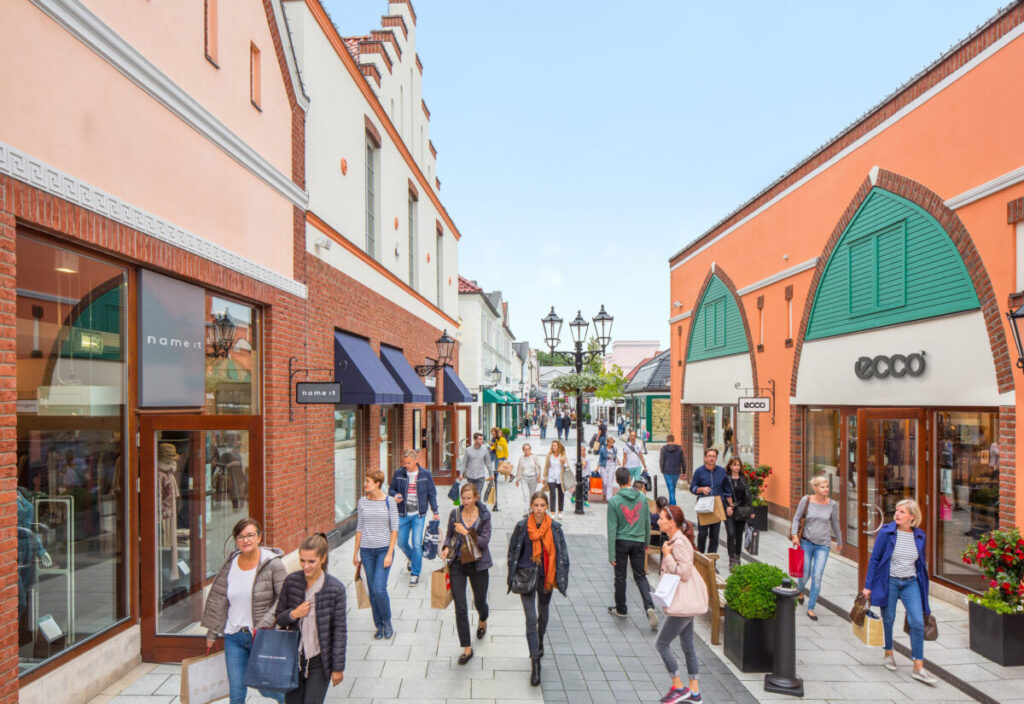
ACROSS: Beyond the brand mix, where else do you see potential?
REICHENAUER: Designer Outlet Berlin is already a well-managed center, but fresh eyes bring fresh ideas. Through our new structure with FREY, for example, we see potential to increase net operating profit without raising costs for our brand partners.
We also place great value on strong local teams, and this remains the case at Designer Outlet Berlin, where we are also taking over the existing team. As always, we will continue with our ‘more power to the center’ approach, which has proven successful in fostering close relationships with both our brand partners and customers. This enables us to tailor our approach—particularly in marketing—to the specific needs of each location, while also infusing the center with Berlin’s unique flair and local heritage.
ACROSS: In other words, decisions are made more quickly on-site.
REICHENAUER: Exactly. Since ROS was founded in 2011, we’ve embraced the ‘think global, act local’ philosophy. It’s how we unlock each location’s full potential. Even now as part of the FREY Group, ROS continues to operate independently with an agile and hands-on approach. That DNA remains unchanged — and it’s central to how we’ll continue delivering value.
ACROSS: Do you have specific sales targets in mind for Designer Outlet Berlin?
REICHENAUER: Our focus is on sustainable growth. By optimizing the brand and category mix, enhancing the customer experience and improving asset management, we expect to see steady growth.
We are also exploring expansion opportunities on site with the local team while keeping cost management — both for FREY and our brand partners. And naturally, improving ESG performance is high on our agenda.
ACROSS: How is the outlet landscape evolving in Germany overall?
REICHENAUER: Germany remains relatively underdeveloped in terms of outlet density. While countries like Italy have around 30 outlets and the UK about 40, Germany has just a dozen or so. New developments here — similar to France — are challenging due to strict regulations.
We’ve seen some additions over the past decade, but these are the exception rather than the rule. One of last truly large-scale openings was over a decade ago in Neumünster. That shows how constrained the market is. Still, the potential is there, but tapping into it requires navigating complex planning processes and having a highly professional approach.
ACROSS: A hybrid model was recently developed with HUMA Welt in Germany. Are such properties, a mixture of outlet and shopping center, the solution?
REICHENAUER: In markets with restrictive planning frameworks, hybrid formats are at least a viable alternative. Germany, for example, has only about a quarter of the outlet space compared to Italy or the UK. Combining outlet and full-price retail in one asset allows flexibility. We’ve already worked on similar projects — like City Outlet Bad Münstereifel, where we integrated an outlet concept into a revitalized historic town center. Innovation is often born of necessity, and Germany is a prime example of that.
ACROSS: But do outlet and full-price models really work side by side?
REICHENAUER: They can — if the boundaries are clearly communicated. Take Designer Outlet Croatia in Zagreb: it’s adjacent to an IKEA and a retail park also owned by IKEA. Each asset has its own identity, yet together they create synergies. Same at Designer Outlet Algarve, where our center sits next to a large shopping mall, an IKEA store and a leisure area. As long as communication is clear and customers know where they are — outlet, full-price mall or, for example, IKEA — and expectations are managed, these combinations can be very successful.
ACROSS: Let’s look to the future. Your acquisition of Designer Outlet Berlin clearly demonstrates your ambition. What are the following steps to becoming a key player in the market?
REICHENAUER: The path is clear. On one hand, ROS will continue expanding its third-party management activities for other investors. On the other, we now also manage and develop the assets that FREY brings into its own portfolio — acting as an in-house outlet management division within the Group.
ACROSS: Are there any further concrete acquisition plans?
REICHENAUER: A lot is happening on the market and we are busy with several projects at the moment. Our focus remains pan-European — the EU and the UK in particular. Together with FREY, we’re targeting opportunities comparable in size and positioning to Designer Outlet Berlin.
ACROSS: In contrast, how important is the topic of in-house development?
REICHENAUER: We’re currently focused on Designer Outlet Malmö and Designer Outlet Kraków, which is opening on 22 May. That said, Kraków and Malmö are the last greenfield projects we’ll be opening for the time being. Greenfields remain complex — approvals are slow and costs have surged — making smart acquisitions our strategic priority. But in essence, it’s a continuation of our core ROS strategy: identify and take over good assets and elevate them with a clear plan and a future-proof vision.
ACROSS: FREY often highlights “open-air shopping” in its retail concepts. How do you define this term?
REICHENAUER: Open-air shopping is the common denominator across all FREY projects. It’s about more than just an architectural format — it’s a mindset. The goal is to create destinations that feel natural, open and easy to navigate — the opposite of traditional enclosed malls. FREY’s retail parks stand out with their open layouts, inviting leisure zones and plenty of space to linger and relax.
Especially post-pandemic, shoppers value these aspects even more: fresh air, room to move and a more relaxed atmosphere. FREY has mastered the art of blending nature, retail, and experience into one cohesive concept — and that aligns perfectly with the outlet format.
ACROSS: If we examine the acquisition in Berlin again, what specific advantages will you benefit from directly after the merger with FREY?
REICHENAUER: Beyond the financial strength and organizational backing FREY brings, we now have access to a broader network of French and international brands — including those that already work with FREY but are not yet active in the outlet sector. There’s huge potential here. The outlet sector is becoming more international and flexible, and we’re positioned to benefit from that trend. We also expect strong synergies in ESG and digitalization — two areas where FREY is a frontrunner.
ACROSS: A general trend in retail is polarization: discount and luxury are thriving, while the middle section is increasingly stumbling. However, polarization also affects the locations: large, well-known shopping centers are gaining ground while others are vacant. Is this also the case in outlets?
REICHENAUER: I prefer to think of it as a matter of focus rather than polarization. In the past, many smaller outlets, in particular, could be run successfully without a major management company behind them. Those days are over. Nowadays, both brands and investors expect professional operators with scale, financial stability, international reach and a proven track record. Leasing expertise, retail standards, marketing excellence and consistent facility management — all of it matters more than ever.
This is where the market is splitting — between those with the capability to meet these modern and growing demands and those who can’t. In the European market, I see only a handful of other players and us taking this truly professional, long-term approach.

